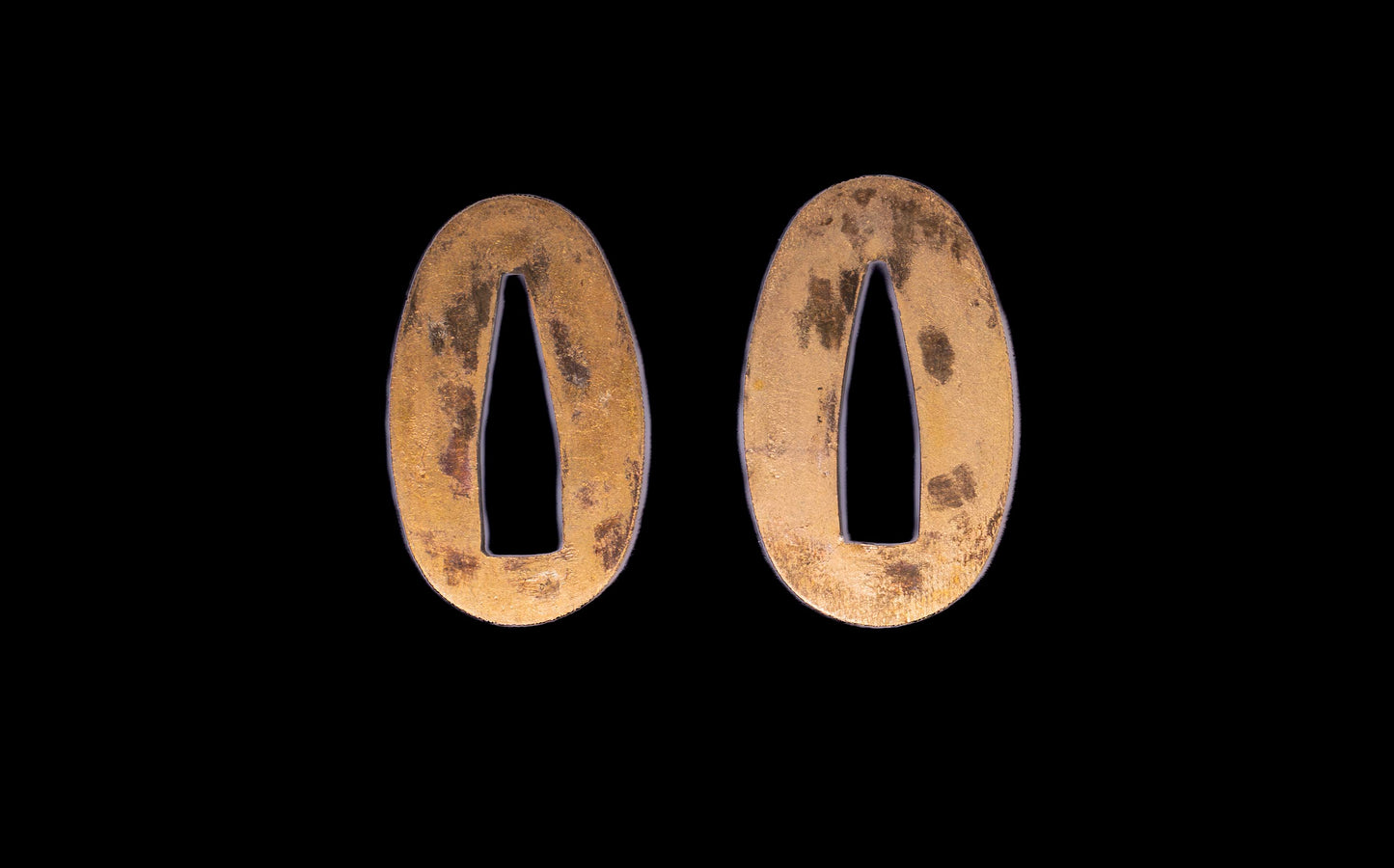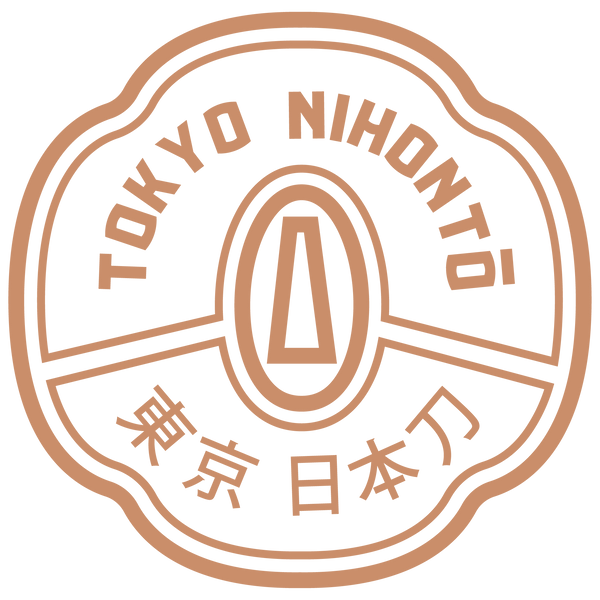Tokyo Nihonto
Antique Japanese Katana Rounded Kakugata Tsuba - Late Muromachi
Antique Japanese Katana Rounded Kakugata Tsuba - Late Muromachi
Impossibile caricare la disponibilità di ritiro
USA SHIPPING ⚠️ From 9 oct. 2025
USA SHIPPING ⚠️ From 9 oct. 2025
Order, Japan Post (EMS) has temporarily suspended all commercial deliveries to the United States.
As a result, we are now shipping through alternative private carriers. Unfortunately, these services are considerably more expensive. Therefore, we kindly ask our U.S. customers to contribute a portion of the shipping cost — $200 per order.
Please note that delivery times will also be longer, as we must obtain a custom shipping quote from the carrier for each sword. We currently estimate a 3–4 month delivery window.
We sincerely appreciate your patience, understanding, and continued support during this time.
Hai una domanda? Contattaci qui .
- Signature (Mei): Mumei — Late Muromachi work
- Period / Province: Late Muromachi period (c. 1550–1600) — Likely Bizen or Mino influence
- Certification: —
- Blade Length (Nagasa): 61.1 cm
- Curvature (Sori): 1.4 cm, gentle tori-zori
- Mekugi-ana: 2
- Shape (Sugata): Shinogi-zukuri with harmonious curvature typical of battlefield swords
- Hamon: Notare-midare — soft undulating wave pattern with a bright nioi-guchi
- Jihada: Ko-itame with subtle hada activity visible under proper lighting
- Kissaki: Chū-kissaki (medium point)
- Polish: Traditional Japanese polish enhancing the flowing hamon and refined ji
- Mounting (Koshirae): Edo-period style — lacquered saya, iron tsuba, gold-decorated fuchi-kashira, dark green tsuka-ito over samegawa
This elegant katana dates to the late Muromachi period (c. 1550–1600), a time of continual warfare when swords were forged for practical battlefield use yet still retained artistic refinement. The blade is mumei, as is typical for many Sengoku-era swords, but its form and workmanship clearly reflect high-quality regional traditions.
The sword features a graceful shinogi-zukuri shape with a gentle tori-zori curvature, offering both cutting efficiency and balanced handling. Its defining characteristic is the flowing notare-midare hamon, composed of soft, wave-like undulations and a bright, active nioi-guchi. This style is commonly associated with strong Bizen and Mino influences during the period.
The ko-itame jihada displays a tight grain that becomes visible as the light moves across the polished surface. Together with the controlled heat treatment, it reflects the skill of late-Muromachi smiths who balanced durability with aesthetic appeal.
The tang (nakago) has two mekugi-ana, suggesting the sword saw service and was remounted during its long life — a hallmark of authentic Sengoku-era blades. The chū-kissaki provides a practical, well-proportioned tip suited for both cutting and thrusting.
The accompanying koshirae displays refined Edo-period styling. The iron tsuba pairs with gold-accented fuchi-kashira, while the dark green tsuka-ito wrapped over samegawa creates a dignified military presence. The lacquered saya completes the mount, offering a cohesive and traditional aesthetic.
As an authentic late-Muromachi katana with attractive hamon and period koshirae, this sword represents the warrior culture of Japan’s Sengoku age — functional, elegant, and historically significant.



































Contenuto comprimibile
Pagamento
Puoi pagare con carta di credito o bonifico bancario. Se desideri utilizzare il bonifico bancario, contattaci utilizzando il modulo sottostante con il nome della spada che intendi acquistare.
Dogane e tasse
・I dazi doganali, le tasse e le spese non sono inclusi nel prezzo dell'articolo o nelle spese di spedizione. Queste spese sono a carico dell'acquirente.
・Si prega di verificare con l'ufficio doganale del proprio paese per determinare quali saranno questi costi aggiuntivi prima dell'offerta/acquisto.
・Queste spese vengono normalmente riscosse dalla società di spedizione (spedizione) o al momento del ritiro dell'articolo: non confonderle con spese di spedizione aggiuntive.
Spedizione e Reso
- Le spade vengono spedite da Tokyo, in Giappone . Gestiamo tutte le procedure per esportare la spada.
- Non puoi restituire la spada al Giappone perché le procedure sono troppo rigide.
- Lavoriamo con una compagnia di spedizioni che ha esperienza con Nihonto, quindi non devi preoccuparti.
- Si prega di controllare le regole del proprio paese prima di importare la spada. Non ci assumiamo alcuna responsabilità, incluso (non limitato a) il rimborso, a causa dei motivi di cui sopra.
Procedura di esportazione (la gestiamo noi)
・Tutte le nostre spade sono registrate presso l'Agenzia per gli affari culturali come opere d'arte e The Board of Education (Comitato per la protezione dei beni culturali); pertanto ogni spada ha la scheda di registrazione, rilasciata dal Board of Education.
・ Dopo aver ricevuto il pagamento completo degli articoli, restituiamo la scheda di registrazione e otteniamo il permesso dal Ministero degli Affari Culturali per esportare legalmente le spade dal Giappone. Ci vorranno circa 20 giorni lavorativi per eseguire questa procedura.
・ Dopo aver ricevuto l'autorizzazione, ti informeremo via e-mail e invieremo immediatamente gli articoli.




































